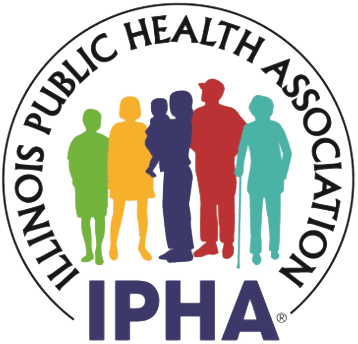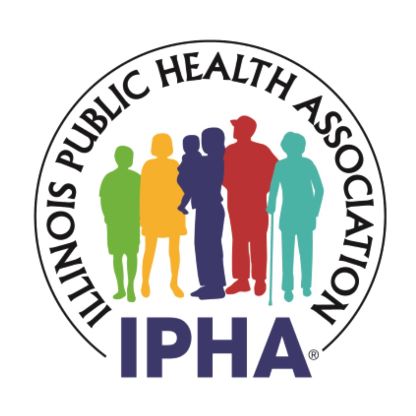Friends of Public Health FY2025 funding request letter to the General Assembly House and Senate Appropriations Committee to increase the Local Health Protection Grant to $30.1 million.
On February 21, 2024, Illinois Governor JB Pritzker delivered his annual State of the State and Budget address before a joint session of the Illinois General Assembly. The $52.7 billion Fiscal Year 2025 (FY25) budget includes substantial investments in early childhood education, the creation of a state child tax credit, and the elimination of $4 billion in medical debt for over one million Illinoisans over the next four years. The budget also includes a reduction in funding for certified local health departments. See IPHA's letter to IDPH's Director regarding this decrease in funding for local public health.
IPHA's longstanding partner, PHIMC, seeks proposal from eligible organizations to participate in the IDHS Transgender and Gender Diverse (TGD) Wellness and Equity Campaign.
The Illinois Public Health Association (IPHA) today announced it received grant funding from Exact Sciences, a leading provider of cancer screening and diagnostic tests, to improve colorectal cancer (CRC) screening rates and make healthcare more accessible for those in Sangamon and Macon counties.
We invite all IPHA members, to share experiences and thoughts on the direction IPHA should take over the next five years. The information collected will be used by the Executive Council, strategic planning steering group, and IPHA leadership to inform the development of the strategic plan.
Fall veto session brought the Illinois General Assembly to Springfield on October 24, 25, and 26 to conduct business during its first week of a two-week Veto session. The House was in session two days (Tuesday and Wednesday) and canceled session for Thursday, October 26. The Senate was in session for three days this week (Tuesday – Thursday). Both chambers will reconvene for three days beginning Tuesday, November 7.
Deadline is October 31, 2023
Congratulations to this year's award and scholarship recipients!
Public comment period for 2023 policy resolutions will be open from September 21, 2023 to September 27, 2023.
Join us for the IPHA Annual Business Meeting on December 14th at 1:00PM CST.
IPHA President, Monica Hendrickson, is holding a special election to fill the vacant President-Elect position on the IPHA Executive Council. The 2023 IPHA Special Election will take place using an online voting system to ensure an effortless process for our members to cast their votes.
Voting will end August 25, 2023.
The Illinois Public Health Association (IPHA) welcomed the increases in state funding for certified local health departments in the Illinois Department of Public Health’s FY2024 budget that was passed by the General Assembly on May 27, and which will be sent to Governor Pritzker for signature.
While the General Assembly completed most of its work by Friday’s self-imposed early adjournment deadline, work remains to be done on the budget, the substantive legislation necessary to implement the budget and a handful of other matters. Both chambers worked into the night on Friday and then adjourned until Wednesday, May 24. The Senate is scheduled to be in session Wednesday and Thursday. The House is scheduled to be in session Wednesday, Thursday, and Friday although leadership has not ruled out the possibility of needing to be in session on Saturday as well. The new fiscal year starts July 1.
The Illinois Senate was in session Tuesday through Friday; session for Saturday and Sunday was canceled. The Illinois House was in session Tuesday through Thursday. Both chambers return to session on Monday, May 8. May 11 is the House Third Reading deadline in the Senate. May 12 is the Senate Bill Third Reading deadline in the House. Note, the Senate created an Agreed Bill List with 108 bills to expedite final passage of non-controversial legislation. One roll call will be taken on Wednesday for legislation on the Agreed Bill List.
In announcing its Know Mpox public service campaign, the Illinois Public Health Association (IPHA) unveiled today new text message alerts, a comprehensive digital tool kit, and a grassroots reporting system to help residents, LGBTQ+ resource centers, and Community Health Workers statewide locate nearby mpox treatments and preventative services.
We are pleased to announce that the 2023 IPHA Election will once again take place using an online voting system to ensure an effortless process for our members to cast their votes.
Voting will take place May 1st through May 31st.
The Illinois General Assembly returned from a two-week spring break with both chambers convening session Tuesday through Thursday of this week. Both chambers return to Springfield for four days of session starting Tuesday, May 25. Friday, April 28 is the committee deadline for substantive legislation to pass out of the second chamber. Four weeks remain in the spring legislative session; adjournment is scheduled for May 19.
Following a two-week spring break, the Illinois General Assembly started its final stretch of the 2023 Spring Session on Tuesday, April 18. An early adjournment is still scheduled for May 19.
Both chambers will begin to consider the opposite chamber’s legislation at the committee level and also finalize original chamber legislation that remains pending with extended deadlines. Appropriations committees in both chambers continue to review the Governor’s introduced budget at the agency level. April 28 is the deadline to pass substantive bills out of committee in the opposite chamber.
This week Illinois joins other states across the United States to observe National Public Health Week.
The Illinois General Assembly stands adjourned for the week. The Illinois House was in session Tuesday through Thursday considering resolutions and holding committee hearings. The Illinois Senate met Tuesday through Friday to consider Senate Bills for final passage. Today, Friday March 31, is the deadline to pass substantive Senate bills out of the Senate.
During the first full week of April each year, the American Public Health Association (APHA) brings together communities across the United States to observe National Public Health Week as a time to recognize the contributions of public health and highlight issues that are important to improving our nation's health. For over 25 years, APHA has served as the organizer of NPHW, and IPHA is a proud partner and collaborator in these efforts.
The Illinois House was in session last week, while the Illinois Senate was not. Both chambers return to session on Tuesday, March 21. There is one week left to consider substantive House Bills for final passage in the House; Friday, March 24 is the House Third Reading deadline. Two weeks are left to consider substantive Senate Bills for passage in the Senate. The deadline to file Floor Amendments to Senate Bills is Friday, March 24 at 3pm.
The Illinois General Assembly was in session four days this week – Tuesday through Friday. The Illinois
House convenes again on Tuesday, March 14 at noon for three days. The Illinois Senate is off next week.
March 10 is the deadline to pass substantive legislation out of committee in the chamber of origin. Thousands of bills were scheduled for committee hearings this week in both chambers (roughly 817 Senate Bills and 1,157 House Bills) making for long committee hearings and long days.
APHA and the U.S. Department of Health and Human Service’s COVID-19 Public Education Campaign, We Can Do This, have partnered to educate patients about their risk for severe COVID-19 and the availability of treatments.
Legislative priorities for the Illinois Public Health Association for the 2023 Legislative Calendar Year.
The Illinois House adjourned for the week after spending Tuesday through Thursday in session. The Senate was off this week. Both chambers return to session on Tuesday, March 7. Friday, March 10 is the deadline to pass substantive legislation out of committee in the chamber of origin.
The Illinois General Assembly was in session Tuesday through Thursday of the week of February 20, primarily considering legislation at the committee level. The Illinois House reconvenes on Tuesday, February 28 for three days of session. The Senate is off next week and will reconvene on Tuesday, March 7.
The Illinois Senate was in session Tuesday and Wednesday of this week; Thursday’s session was canceled. The Illinois Senate returns to session on Tuesday, February 7. The Illinois House returns to session on Tuesday, January 31.
Note the drafting deadline is today (Friday, January 27) for substantive Senate Bills and Friday, February 3 for substantive House Bills.
The Illinois General Assembly was not in session this week. The Illinois Senate returns to session on Tuesday, January 24. The Illinois House returns to session on Tuesday, January 31.
The 102nd Illinois General Assembly adjourned sine die. Prior to adjourning, the Illinois General Assembly approved a ban on assault weapons, an omnibus abortion and reproductive health package, an economic development package, a supplemental appropriation and budget implementation legislation, mandatory paid time off for private workers, energy legislation and several other items. Members of the 103rd General Assembly will be sworn into office at noon on Wednesday, January 11. Leadership teams for the Democratic supermajorities were expanded under SB 1720 (Sims/Harris). Beginning in the 103rd General Assembly, two additional leadership positions are created for the House Democrats -- the new position of House Speaker Pro Tempore and an additional Majority Leader. There will also be one additional Senate Majority Leader.
SPRINGFIELD, IL – The Illinois Public Health Association (IPHA) will receive $500,000 in funding to expand its Community Health Worker Training Programs. The funding was secured as part of more than $182 million in Congressionally directed spending projects for Illinois for Fiscal Year 2023 through the Omnibus Appropriations Act by U.S. Senate Majority Whip Dick Durbin (D-IL). This investment will help IPHA to grow the community and public health workforce.
The COVID-19 Pandemic challenged our health care systems in ways few thought possible. As the severity of this public health crisis began to unfold, our teams jumped into action to assess how we could aid families in Illinois directly affected by the virus. Through funding from the Illinois Department of Public Health, we were able to conduct research, build partnerships, and ultimately deploy a statewide network and program to help Illinois residents across the state.
The Illinois General Assembly adjourned the first week of veto session, with both chambers canceling Thursday’s scheduled session. The Legislature will return for the second and final week of Veto Session November 29 - December 1.
The Illinois General Assembly begins its six day Fall Veto Session beginning Tuesday, November 15. Veto session will run November 15 – 17 and November 29 – December 1 – note that the House canceled session for Thursday, November 17.
The 2022 midterm elections solidified Illinois as a solidly blue state with Democrats winning big up and down the ticket. Democrats benefited from a huge fundraising advantage as well as the newly drawn congressional and legislative districts which were crafted under their control.
Election Preview: Illinois’ General Election is Tuesday, November 8. While Republicans seem to be picking up momentum elsewhere in the midterm elections, barring any unexpected upsets, Democrats are expected to perform fairly well overall in Illinois on Tuesday. As always, voter turnout will be key.
SPRINGFIELD, IL – The Illinois Public Health Association (IPHA) was awarded a $3 million grant from the federal Health Resources and Services Administration (HRSA).
IPHA Congratulates New Illinois Department of Public Health Director Dr. Sameer Vohra
Today’s Supreme Court decision to overturn its landmark 1973 decision to protect a women’s liberty to abortion services is disheartening and a significant setback to the health of all Americans.
SPRINGFIELD, IL – May is Mental Health and Trauma Awareness Month, a time to raise awareness of the impacts of trauma on the physical, emotional, and mental wellbeing of children, families, and communities.
New office opening in Chicago, Illinois to support continuing growth in services for local health departments and community-based organizations.
Tom Hughes, Executive Director of the Illinois Public Health Association (IPHA), released the following statement on Thursday.










